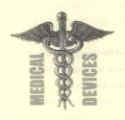

THE NEW WAY:
|
This diagram shows how the KeleTrap
™
functions to catch |
This image shows how the KeleTrap ™ hangs on a hospital room wall: |
|
|
|
THE OLD WAY:
|
The first picture is an example of the typical set up in the house of a patient with a tracheostomy tube; the ventilator and humidifier machine are on the top of the table and the suction machine with all the suction tubings and the Yankeaur * suction bulb and suction catheter are on the bottom of the table. |
|
|
|
Here's a close-up view (from the previous picture) of what the KeleTrap ™ is intended to replace:
|
* The suction of this kind of patient is so important as this is what makes them breathe by clearing the secretions from the orifices. This is done by using, a Yankeaur for the mouth, a catheter for the trach or a suction bulb as the case may be. The arrow indicates an example of how the inventor ( who is an RN) originally tried to catch the backflow, by turking in the yankeaur inside an improvised paper container without touching the bottom of the container after flushing the suction tubes with either the yankaeur or bulb attached to it, depending on what is being used at that time. Other nurses use different methods to prevent the back flow by using a glove around the yankaeur or bulb; others use syringe barrel with tape around the end and attach it to the infusion pole with a tape. Others simply give up and just hang the suction tubing on any available space or wind it around the suction machine itself.
|
FEATURES: |
BENEFITS: |
|
|
In the hospitals, nursing homes and surgical centers, you have the same problem but the difference is that attendants can be called to clean the floor or the surfaces, the bed sheets, etc. In the homehealth nursing industry, it is different because the backflow drips on the floor or carpet, absorbed and dried up, and then becomes airborne. This causes the patient to become infected, and this contaminates the surroundings. As a result, the people working around the patient become sick, which can cause a patient to have to go back into the hospital repeatedly.
The KeleTrap ™ prevents these backflow drippings on the surface and on the floor, and can be either suctioned out during the shift, or can be rinsed off, sterilized in the vinegar water and be ready for use during the next shift.
The medical field is continuously growing, developing and improving.
But the rate of secondary acquisition of disease and infection amongst its inpatients has grown and developed even further.
“Cleanliness is next to godliness,” the old saying goes. But in hospitals and other health environments, the state of sanitary cleanliness can at times be almost devilish. These environments serve those with sickness, and such sickness can be unintentionally and unwontedly made accessible in these health facilities.
Catheters, for example, are frequently used tools in the care of many patients. But these devices need immediate, sanitary and contained storage. Without such, their purpose of health improvement may be defeated, and the medical environment may wind up contaminated. And that’s why the KeleTrap ™ needs to be implemented within these environments.
The KeleTrap ™ is a prophylactic storage device for catheters and other medical tools, and consists of a polystyrene body that can be mounted upon a wall or other level surface by bracket. Its top portion is torus-shaped and features a soft, elastomer lining capable of sterilization, and through this top may a catheter be inserted and sanitarily stored and drained.
An opening on the side of the KeleTrap ™ allows fluids that drain from an inserted catheter to be removed, and a separate reservoir compartment within the main body could also be featured to store a catheter rinse solution.
The KeleTrap ™ ensures that commonly used medical tools can be stored safely, securely and sanitarily. And by doing so, healthcare environments can more properly maintain their operating principles of health.
Please visit the inventor's main web site at www.newproductsnetwork.com/kelatrap for more information
Inventor: Lanre Kelani,
13578 S.W. 21st Street
Miramar, FL 33027
Phone: (954) 612-4398
E-mail: npagsf@bellsouth.net
 since June 1, 2004
since June 1, 2004